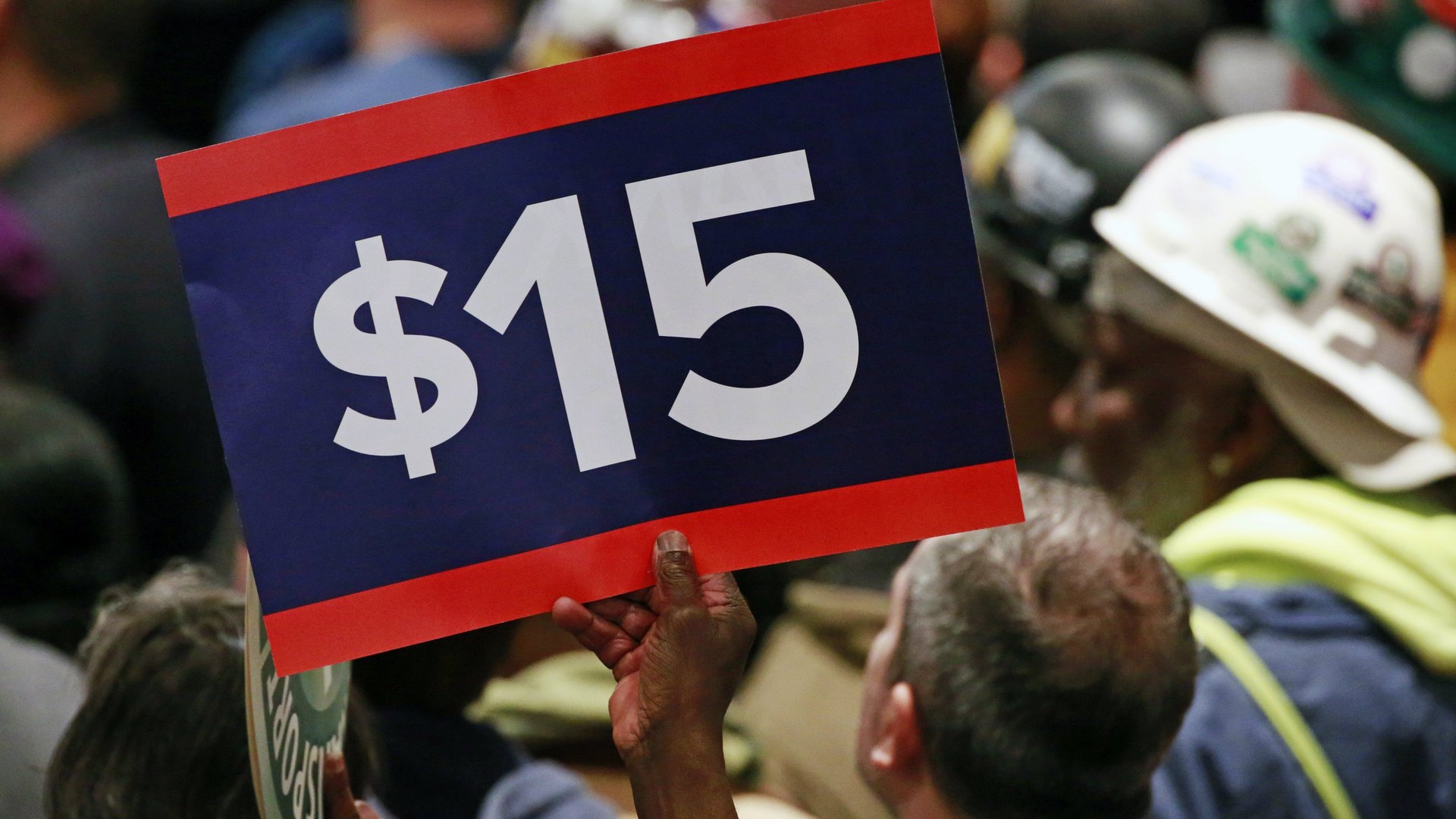A new study of Seattle’s minimum wage hike shows who it helps, and who it hurts
Depending on what we want to believe about the minimum wage, we tend to assume there exists one of two types of low-wage workers.


Depending on what we want to believe about the minimum wage, we tend to assume there exists one of two types of low-wage workers.
One type is scrappy, but unskilled–looking to get on the first rung of the economic ladder. Once they get that first job they will eventually learn new skills and get raises. Economists and policy makers who believe this contend big minimum wage increases are harmful because some aspiring workers won’t get jobs and will miss that first opportunity to enter the job market.
The other type are people are stuck in a trap of low-wage work. For these workers, the system is stacked against them, and they will never earn more than the minimum wage. Therefore, some policy markers believe we should increase wages because it will reduce their poverty.
Traditional studies on the minimum wage have not been able to disentangle the two types because they didn’t have enough data on individuals over time. It is also hard to tell if wages go up because of the minimum wage, or if some people are getting raises. But a rare natural experiment presented itself when the Seattle City Council voted in 2014 to increase its minimum wage to $15 over a three year period, while its surrounding counties did not. Economists were offered the chance to observe how minimum wage increases impact different kinds of workers.
Researchers at University of Washington, New York University, and Amazon studied the effects on 25,000 low-wage workers. They released a paper a year ago that estimated that the wage increase $9.47 to $13 harmed low-skill workers most. A new update with more data, released as a working paper today (Oct. 22), finds some low-wage workers did benefit, after all.
The researchers estimate that low wages went up more in Seattle than in the counties that didn’t increase wages, meaning they could attribute the gains to the minimum wage, and not broader economic conditions. But they also noticed a drop in hours worked. Some workers still came out ahead, working fewer hours but at higher hourly wage to make up for it. Those tended to be more experienced workers with more time on the job. Less experienced workers were more likely to end up with lower earnings over all, or with no gains.
The economists also looked at rates of entry, or how many people, who did not work before and have no skills, entered the labor market following the wage increase. The estimate that right after the minimum wage went up, entry rates flattened and eventually fell as the minimum wage went up further, suggesting less experienced workers were offered fewer opportunities for work. Meanwhile, in neighboring counties, entry rates continued to increase before leveling off in 2017. This leads them to conclude, “Seattle’s minimum wage ordinance appears to have delivered higher pay to experienced workers at the cost of reduced opportunity for the inexperienced.”
The economists caution the results can’t be generalized because Seattle also experienced a big economic boom in the last five years. A fast-growing economy can better absorb wage increases. But even during a boom time, it seems the policy involves trade-offs. It helps workers stuck in low-wage jobs, while harming workers looking to get their first foothold in the economy.